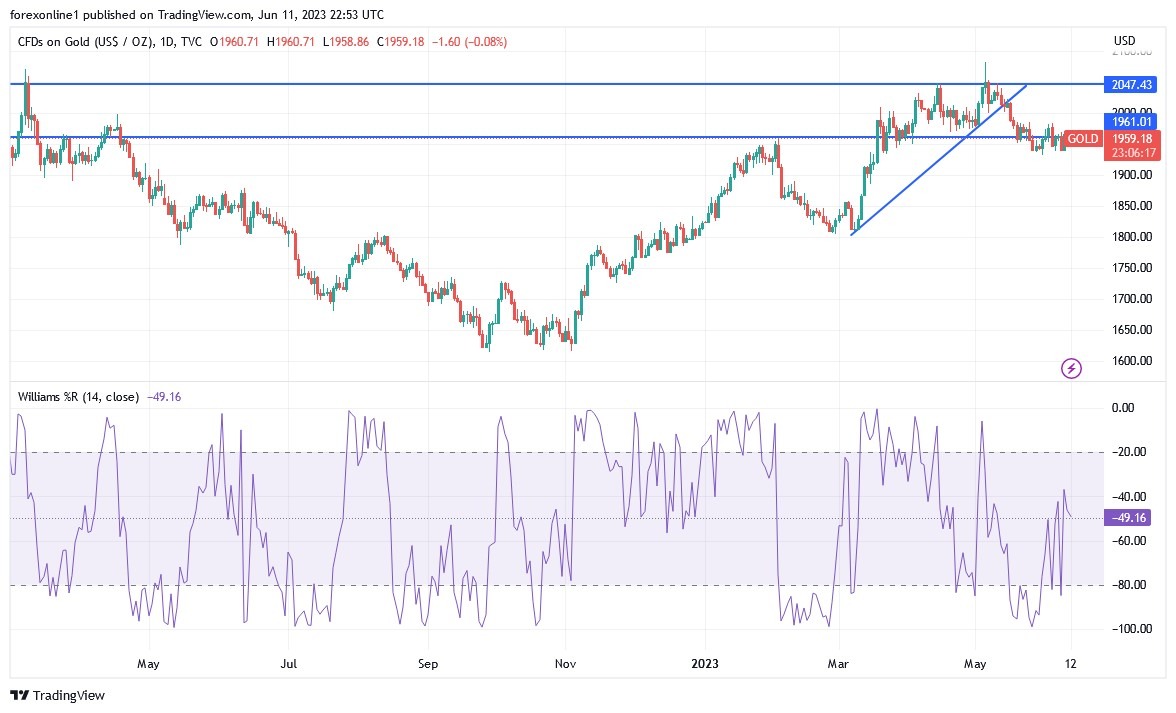The halting of the US dollar's gains allowed the XAU/USD gold price to recover to the $1973 resistance level, before settling around the $1960 level at the beginning of this exciting week's trading. This is a fateful week ahead for the US dollar and, accordingly, for the gold market. Before that, we also cannot forget that gold is one of the best hedges against inflation.
Consider this: In the 110 years since the creation of the US Federal Reserve, the US dollar has lost 99% of its purchasing power, while gold has hardly been affected by relentless annual inflation. Inflation is also a major reason why countries like Turkey, which saw an 80% rise in price levels, made more gold purchases last year.
Top Forex Brokers
But what if all these motives do not fully explain CB's recent purchases? After all, central banks are by far the longest net buying period on record since 1950. Most of the prerequisites for earlier gold purchases (risks of financial turmoil, inflation, etc.) still prevail, yet the buying patterns of recent years show something stronger. Another motive in itself - pushing banks to buy more gold.
This deeper analysis left us with an interesting idea: all this gold buying may have something to do with the massive losses central banks have incurred over the years - gold could be used to help them get out of debt.
The idea is very simple; It is about using the rising value of banks' gold holdings (what investors call "unrealized gains") to write off sovereign bonds. This practice would be particularly applicable to European central banks, as they collected most of their bullion during the Bretton Woods era when gold was valued at $35 an ounce. Now that the metal is trading at around $2,000/oz, central banks are now sitting on unrealized gains worth hundreds of billions of dollars (Germany, for example, bought its gold for €8 billion; today it's worth about €180 billion). Among the many ways that these massive gains can be “weaponized” to their advantage, banks can simply use them to cover debt.
We also need to remember that government debt-to-GDP ratios in many European countries are still at all times high, so this is a critical time for their central banks to make a call on whether to write off sovereign debt and offer relief to their governments.
But how can central banks do this? As explained earlier, all it takes is a simple balance sheet maneuver using a so-called “Gold Revaluation Account” (GRA), which can be used to record the increasing nominal value of gold reserves and offset losses from others. Asset classes (ie currency and bonds). in general. Investment demand for gold is rising along with the purchases of central banks, which has gained strength after the recent banking crisis in the United States. In the same CNBC interview, WGC’s Street indicated that there was a significant rise in demand for gold in March after the collapse of the Silicon Valley bank, which was the first of what became a series of failures in the US banking system among regional institutions exposed by high rates of interest.
As a result, March saw large inflows of gold-backed ETFs driven by concerns about systemic risks in the economy, which partially offset outflows during the first two months of the year. Those risks also fueled inflows into the month of April, as North American funds led the way by adding $1 billion worth of holdings.
Analysts at ANZ Banking Group therefore expect that flows into gold-backed ETFs are likely to remain positive for the rest of this year given the many tailwinds to gold, particularly as the Fed nears the end of its rate-raising cycle.
Technical analysis of gold prices:
- In the near term and according to the performance of the hourly chart, it appears that the XAU/USD gold price is trading within a bearish channel formation.
- This indicates a significant short-term bearish bias in market sentiment.
- Therefore, the bears will look to extend the current range of declines towards $1956 or lower to $1950 an ounce.
- On the other hand, the bulls will look to pounce on profits around $1,968 or higher at $1,983.
On the long term and according to the performance on the daily chart, it appears that the XAU/USD gold price is trading within a sharp descending channel formation. This indicates a strong long-term bearish bias in market sentiment. Therefore, bears will look to pounce on long-term gains at around $1939 or lower at $1914 an ounce. On the other hand, the bulls will be looking for a bounce around $1986 or higher at $2020 an ounce.
Ready to trade today’s Gold forecast? Here are the best Gold brokers to choose from.

